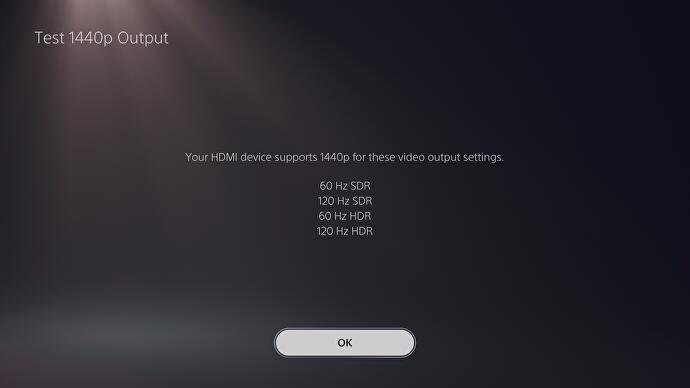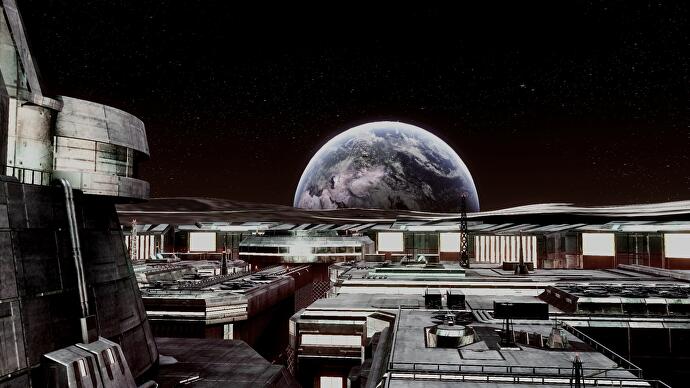PS5: 1440p Support Tested – A Better Image for PC Monitors, But Else?

8K display support may still not be available, but Sony recently surprised us with a new firmware beta that opens the door to 1440p functionality for the PlayStation 5, alongside a host of other smaller new features and improvements. With its plans to enter the PC monitor market, supporting 2560×1440 functionality makes sense. While the firmware beta is working well, a little more work is needed to ensure this update delivers what it’s supposed to.
Before we get into the details, the introduction of this feature shows that Sony is more responsive to consumer feedback. Not only has support for 1440p monitors been implemented, the company has also responded to criticism of the initial implementation of Auto Low Latency Mode support, an option that essentially automatically invokes Game Mode on HDMI 2.1 TVs. At first ALLM wasn’t available at all, then it was added but couldn’t be disabled (causing problems with other TV features such as Black Frame Insertion). Eventually ALLM was added as an on/off option, which everyone was happy with. This might seem like a small detail, but it’s actually a good thing that a platform provider cares about what some might see as minor things.
Adoption of 1440p is more of a mainstream requirement, however, simply due to the proliferation of 1440p PC screens, which currently represent the sweet spot in terms of price, quality, features and performance. While a 4K screen is better suited to current consoles, 1440p is ubiquitous in the PC space. These screens typically support 1440p over HDMI 2.0 at both 60Hz and 120Hz, and HDR is often present as well. The addition of specific support solves the problem that some of these screens don’t support 4K 60Hz input, meaning 1080p was the only way forward. And while some monitors will downscale a 4K 60Hz input could, 4K 120Hz has always been off the table due to the bandwidth limitations of the HDMI 2.0 protocol. Introducing a native 1440p output solves the compatibility issues and also allows for 120Hz. By having the PS5 do the scaling, the possibility of additional display latency from scaling is eliminated and likely a better quality result too.
It’s worth emphasizing here that just like the 1080p option on the PlayStation 5 for most games, 1440p only changes the video output, it doesn’t change the rendering resolution of the titles being played, so performance is the same as 4K . I’ve also noticed that for titles that have different rendering profiles depending on the output resolution selected (mostly PS4 Pro games), selecting 1440p switches to 4K mode, with the GPU downscaling the image before it send it to the display output.
Interestingly, Sony has included a test function that allows users to check if 1440p actually works correctly on their screen. It loops through 1440p output at 60Hz and 120Hz in SDR and HDR color modes. Once you’ve verified that you’re getting an image in each configuration, you can select 1440p output in the dashboard and you’re good to go.
With the final introduction of 1440p for PlayStation 5, I’d like to see one major change. VRR (variable refresh rate) works fine on the PS5 at 1080p or 4K, but Sony has chosen not to support it at 1440p. This is disappointing because it works fine on Xbox. It may well be that there is a deviation from the HDMI spec that allows VRR and 1440p to run together, but the point is that it is possible and should therefore be supported. If you are using a 1440p PC monitor with FreeSync enabled in the menus, 1440p may not work at all. We observed this behavior on an LG 27GL850. But if you go to the monitor’s menu and disable FreeSync support, it should work. Ideally, everything should work automatically. Some PC monitors don’t support VRR at the full 120Hz, so this may be due to compatibility concerns. But the fact of the matter is that many screens support it, so it should be supported.

Something we’ve tested extensively – as far as we could – is the support of the new firmware for HDMI 2.0 TVs. Right now, the PS5 runs 60Hz content at full 4K resolution, as it should. However, 120Hz gaming drops the resolution to 1080p, which is fine except that many screens, including the popular Samsung NU8000, actually support 1440p120. Supporting this would be a good thing as many 120Hz game modes won’t go above 1440p anyway. We managed to do that with the NU8000, but it wasn’t easy. Namely, the display supports 1440p120 but not 1440p60, which means we failed the test sequence, which starts with a 60Hz test. It was only by pressing right and then X on the controller to pretend it was supported that we were able to move on to the 1440p120 test, which the NU8000 works fine with. Once you confirm that, you’re good to go: games run at 4K60 on 60Hz content and deliver 1440p120 when high frame rate modes are enabled. A small tweak to the 1440p test cycle could fix the issue, perhaps testing at 120Hz first and not automatically failing when there’s no image. This may only be an issue on a small number of screens – many work fine – but I expect there are many thousands of Samsung HDMI 2.0 screens of any given year out there.
Using it with 4K60, with a 1440p120 fallback for high frame rate content, works pretty well. That’s maybe even better than the Xbox way of setting 120Hz for Everyone Content applies even if the frame rate is limited to 60 fps. Xbox owners with HDMI 2.0 devices that support 1440p120 will need to manually change the resolution and refresh rate for best results, while a properly configured PS5 will automatically change the screen output depending on the content.
Once you start using 1440p, what happens to games running at different resolutions? The Sony blog post describes how the console outputs native 1440p, but are we just talking about a 1440p signal, or are games that render natively at 1440p output with a pure 1440p 1:1 pixel mapped output? The truth is that it’s a little complicated. To test this we first need to find a game that outputs 1440p natively and preferably without anti-aliasing, the more edgy the image the better. It’s not easy, but if we browse the PS4 Pro library, Star Ocean: The Last Hope offers the option to choose from a range of resolutions. And yes, you can get an image without anti-aliasing in this game. Image quality is pin sharp, suggesting that a native 1440p game will output at crystal clear 1440p, with no scaling or double scaling artifacts (1440p to 4K to 1440p).

In our testing, however, that ultra-clean 1440p output isn’t always a given. PUBG on the PS4 Pro also renders internally at a fixed 1440p resolution. The gameplay looks absolutely fine here with TAA, but double scaling seems to be occurring as shown by capturing a still from a camera cut with TAA not active in the first frame. This suggests the developer is taking the 1440p framebuffer and incorporating it into a higher resolution 2160p image with 4K HUD detail. This is then scaled back down to 1440p by the console’s new scaler feature. Is this a problem? Not really, as the loss in clarity isn’t that significant, but it does show the limitations of the setup.
There is something else to consider. In the current era of TAA upscaling, a native 1440p image gains detail from earlier frames before beaming a 2160p image onto the 4K screen – Demon’s Souls Remake in its Performance mode is a good example of this. In this scenario, reconstructing to 4K and then downscaling to the 1440p screen is a real win in terms of image quality. Ultimately, the results look pretty good on a 1440p screen with this new firmware, whether you want to supersample from a well upscaled image or simply downscale to 4K.
In summary, I was surprised and delighted when this new feature appeared out of nowhere. The more high-resolution displays the PlayStation 5 supports natively, the better. However, the lack of VRR support should be addressed and the mandatory 1440p test cycle needs a small rework to account for the possibility of HDMI 2.0 TVs supporting 120Hz but not 60Hz. Next stop: 8K? That’s hardly a priority given the lack of gaming and media support, but it’s still a bit odd that 8K support is mentioned on the box when the console doesn’t offer any 8K functionality.
![]()
Originally written by Richard Leadbetter, Technology Editor, Digital Foundry
Reference-www.eurogamer.de